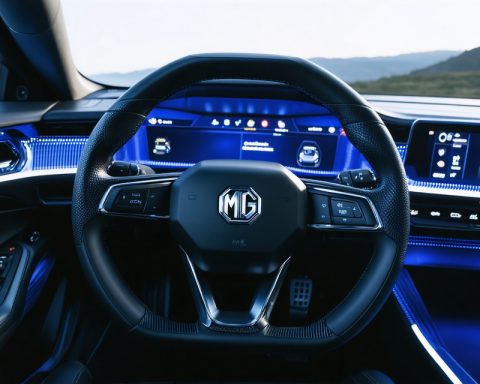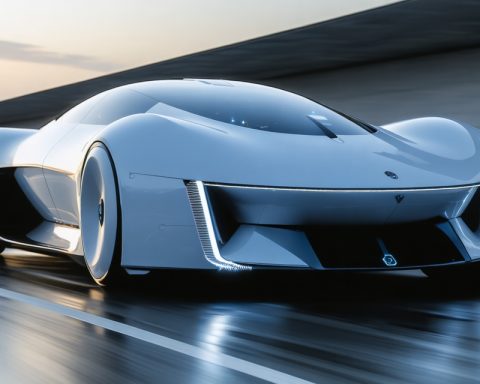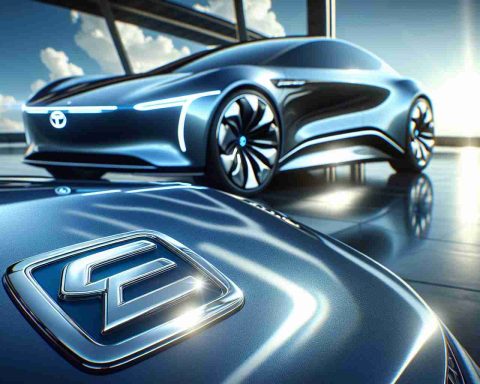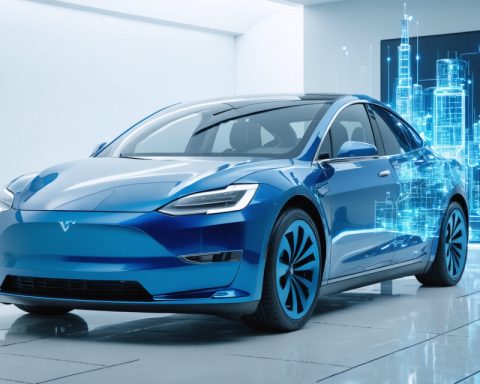- The EV market is experiencing a sharp divide between profitable automakers like Tesla, BYD, Li Auto, and Series Group, and those struggling with high costs.
- Tesla holds a leading 7.2% operating margin, while BYD is closing in with a 6.4% margin, indicating a competitive shift.
- Vertical integration is key to profitability, with companies producing batteries, drivetrains, and software internally to reduce costs.
- New Chinese contenders like Zeekr, Xpeng, and Leapmotor are improving margins, despite some like Nio and Polestar remaining unprofitable.
- Lucid faces significant challenges with a -374% margin, relying on Saudi support amid difficult market conditions.
- Tesla is the only non-Chinese brand achieving sustainable profits, but faces growing competition and price pressures.
- Excellence in supply chain control and integration is vital for success as the EV industry grows increasingly competitive.
Amidst the electric vehicle (EV) revolution, a select few automakers are accelerating into profitability, leaving many of their peers at a standstill. As sales volumes soar globally, the divide between profitable innovators and struggling hopefuls has never been starker. Among the trailblazers are Tesla, BYD, Li Auto, and the under-the-radar Series Group, each leveraging the power of vertical integration to define the future of transportation.
Tesla, the celebrated beacon of automotive innovation, set the pace with a 7.2% operating margin in 2024. Meanwhile, BYD, China’s electric juggernaut, surged with a 6.4% margin, fueled by an upward trajectory that hints at the possibility of overtaking Tesla’s profitability crown. Such shifts underscore a critical moment in the sector: the economic dawn favors those who merge creativity with control.
Both Tesla and BYD have mastered the art of vertical integration. By crafting batteries, drivetrains, and software internally, they ensure cost efficiency and streamline production. It’s this holistic approach that Li Auto and Series Group mirror with success. In contrast, companies lacking such comprehensive control often find themselves swamped by mounting costs and dwindling margins, struggling to keep pace with industry giants.
In the dynamic Chinese market, new contenders are drawing closer. Geely’s premium brand, Zeekr, has made strides with a narrowed -8.5% margin, while Xpeng and Leapmotor cut losses significantly. Yet, some like Nio and Polestar remain entrenched in the red, striving to navigate the treacherous path to profit.
Lucid, meanwhile, remains the stark outlier; its staggering -374% margin a reminder of the harsh economic realities. Protected by Saudi sovereign wealth, Lucid stays afloat, but the gulf between its ambitions and economic performance highlights the precarious nature of the EV marketplace.
Remarkably, Tesla stands as the lone non-Chinese brand achieving sustainable profitability, a testament to its pioneering spirit. However, the escalating competition and relentless price wars cast shadows over its future. The takeaway? Mastery over the supply chain and strategic investment in integration are not mere advantages—they’re necessities in the escalating race for EV dominance. As the industry steers into uncharted waters, the engines of innovation and efficiency will drive the victors of tomorrow.
The Race for Electric Vehicle Dominance: Who Will Emerge Victorious?
The electric vehicle (EV) industry is navigating a critical juncture, as it battles through the dual pressures of technological innovation and financial viability. While certain automakers like Tesla, BYD, and Li Auto are speeding toward profitability, others struggle to keep pace. Importantly, this dynamic underscores how essential vertical integration and strategic foresight have become in the EV market.
Key Factors Driving Profitability
1. Vertical Integration: Tesla and BYD exemplify the power of vertical integration. By manufacturing key components like batteries and drivetrains in-house, they reduce costs and enhance efficiency. Li Auto and the Series Group are also embracing this strategy, proving its crucial role in achieving profitability.
2. Market Positioning: While Tesla leads with a 7.2% operating margin, BYD is closing in with a 6.4% margin. This race showcases the importance of strategic positioning and market adaptation. For instance, BYD’s massive foothold in the Chinese market offers a unique growth platform.
3. Emerging Contenders: In China, brands like Zeekr, Xpeng, and Leapmotor are narrowing their losses and potentially positioning themselves as future competitors. Their ability to innovate quickly could disrupt current market dynamics, especially in the premium segment.
Addressing Challenges: The Path for Strugglers
1. Lucid’s Financial Woes: With a staggering -374% margin, Lucid exemplifies the challenges new entrants face. Despite financial backing from Saudi sovereign wealth, Lucid struggles due to high production costs and intense competition.
2. The Role of External Funding: Companies like Nio and Polestar need to attract investment to fund their R&D and effectively manage costs. This highlights the importance of robust financial strategies.
Market Trends & Predictions
– Increase in Strategic Partnerships: Expect to see more alliances between traditional automakers and tech firms. These partnerships can accelerate technological advancements and provide much-needed resources for innovations.
– Focus on Sustainability: As environmental regulations tighten, automakers will need sustainable practices not only to attract eco-conscious consumers but also to comply with governmental standards.
How-to Steps for Automakers
1. Invest in Technology and R&D: To retain a competitive edge, pouring resources into technology development, like autonomous driving capabilities and battery technology, is imperative.
2. Enhance Supply Chain Management: Mastery over the supply chain can lead to significant cost reductions and improved production times, a critical factor for success.
3. Adjust Pricing Strategies: With growing consumer demand for affordable EV options, strategic price adjustments and cost efficiencies can make or break a company’s market position.
Quick Tips for Consumers
– Research Before Purchase: Given the rapid advancements, staying informed about the latest technologies and features is crucial.
– Assess Long-term Costs: Consider factors like battery longevity, maintenance, and charging infrastructure before making a purchase.
For more insights into the evolving EV landscape, visit Forbes or Wall Street Journal.
Conclusion
In the relentless race for EV market leadership, only those who innovate and adapt will rise. Automakers that effectively leverage vertical integration and strategic foresight are likely to dominate the future landscape. By taking actionable steps today, companies can secure their place in the EV revolution.




















